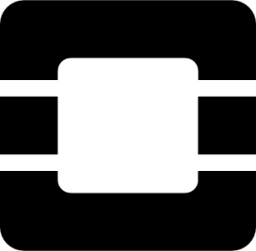Managed Service Providers (MSPs) are increasingly turning to cloud solutions to meet their clients’ growing demands as many begin or continue their digital transformations. While public cloud and traditional on-premises solutions have their roles, OpenStack-based hosted private clouds are emerging as an attractive alternative.
In this blog, we’ll explore how MSPs can use OpenStack to improve operational efficiency and service delivery while strengthening client relationships.
1. Fine-Tuned Performance and Resource Control
One of the standout features of an OpenStack-based hosted private cloud is the level of control it offers over cloud resources. Unlike some public cloud environments where resource allocation can be less transparent, OpenStack allows MSPs to directly manage and fine-tune virtual machines (VMs), storage performance (e.g., IOPS), network configurations, and CPU allocation. This means that IT teams can precisely manage the density of resources and VMs to optimize performance based on client needs. Whether the demand is for high IOPS storage, high CPU resources, or specific network configurations, OpenStack is highly customizable. Your clients can get exactly what they need for their workloads.
2. Lower Cost Per vCPU, vRAM, and Storage
OpenStack-powered hosted private clouds often offer a more competitive cost structure compared to public cloud providers, especially when factoring in resource consumption such as vCPUs, RAM, and storage. Public cloud providers typically charge on-demand pricing, which can be unpredictable and expensive over time. In contrast, OpenStack enables MSPs to provide their clients with a more predictable and lower cost per vCPU, vRAM, and storage. Since OpenStack is open-source and highly customizable, it helps MSPs achieve cost-efficiencies that can be passed on to their clients, enhancing the overall value proposition.
Since OpenStack is license-free, it also greatly lowers operational costs for MSPs. Unlike proprietary cloud solutions that require expensive licenses and subscriptions, OpenStack offers MSPs a cost-effective, open-source alternative. This allows MSPs to build their cloud offerings without being burdened by licensing fees, making it a financially appealing choice for both MSPs and their clients.
3. Enhanced Security and Compliance
Security is a top concern for businesses when migrating to the cloud. With OpenStack-based hosted private clouds, MSPs gain full control over the stack of security services, enabling the implementation of best-in-class security measures that meet specific client needs.
Features such as network segmentation, zero-trust security at the VM level, and firewall appliances can be seamlessly integrated into the environment. This offers clients a robust security posture, with full control over their data and operations, minimizing risks of unauthorized access and data breaches.
Additionally, MSPs can ensure compliance with industry-specific regulations, such as GDPR or HIPAA, more easily by controlling and monitoring all aspects of the infrastructure.
4. Low Maintenance and Reduced Support Staff
One of the primary advantages of choosing a hosted private cloud solution is the reduced burden on internal IT resources. Unlike on-premises deployments, where infrastructure management, upgrades, and security patches fall squarely on the shoulders of internal IT teams, a hosted private cloud solution minimizes the need for ongoing maintenance and troubleshooting. This allows MSPs to offer clients a “hands-off” experience, where the day-to-day operations are managed by experts, ensuring uptime and performance without requiring significant internal support staff. This can result in substantial cost savings for businesses and greater operational efficiency.
5. Partnering with OpenMetal for Hosted OpenStack Solutions
A key player in the OpenStack-based hosted private cloud space is OpenMetal, a leading provider of hosted OpenStack cloud solutions. OpenMetal specializes in providing MSPs with customizable, scalable, and secure hosted private cloud environments powered by OpenStack. By partnering with OpenMetal, MSPs can offer a fully managed, high-performance private cloud service to their clients, backed by OpenMetal’s expertise in deploying and maintaining OpenStack environments.
OpenMetal’s hosted private cloud offerings come with the added benefit of white-labeling capabilities, allowing MSPs to rebrand the service and present it as their own. This ensures that MSPs can maintain their brand identity while delivering a seamless and tailored cloud experience to their clients. By leveraging OpenMetal’s infrastructure and support, MSPs can offer a “low maintenance” private cloud solution while focusing on growing their client base and adding value to their services.
6. White-Labeling for a Sticky Product Line
Another powerful benefit of OpenStack-based hosted private clouds is the ability to white-label the service. MSPs can brand and customize the cloud environment with their own logo, portal, and interface, offering a seamless experience to clients under their own name. White-labeling not only allows MSPs to provide a differentiated and value-added product but also creates a more “sticky” relationship with clients. Since the cloud solution is fully branded and integrated into their services, clients are less likely to switch to other providers, giving MSPs a long-term, recurring revenue stream.
Summary
OpenStack-based hosted private clouds offer MSPs an exceptional opportunity to provide their clients with a high-performance, secure, and cost-effective cloud solution. By leveraging the flexibility of OpenStack, MSPs can fine-tune performance, reduce costs, and deliver customized solutions that align with client needs.
In addition, hosted private clouds provide a simpler, low-maintenance alternative to on-premises deployments, while also offering the potential for increased client loyalty through white-labeling.
Partnering with providers like OpenMetal ensures that MSPs can access top-tier OpenStack infrastructure while delivering a tailored solution to their clients. By embracing this technology, MSPs can differentiate themselves in a competitive market and deliver lasting value to their clients.
Read More on the OpenMetal Blog


































